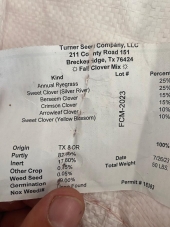I write this with a heavy heart because it may indicate that I have doing everything wrong. My research is indicating that thick forests in semi arid areas actually suck up more water than they store in groundwater. Instead it seems that a patchwork of trees widely spaced is what is best in terms of biodiversity, biomass production, and water retention.
First, I'll start with this study on forests in Burkina Faso
https://www.cifor.org/knowledge/publication/5996/. This is the Sahel region of North Africa at the edge of the Sahara. The biome would be sub-tropical grassland under a monsoon cycle of dry and wet times of year. They found that the best water infiltration and soil moisture was achieved at 10-20% tree coverage with space left between tree canopies. They did find that the patchwork of trees outpeformed treeless grassland and desert.
Second, Utah State University as well as Colorado State officially recommend 50 feet spacing between mature pinyon and juniper trees
https://www.youtube.com/watch?v=p39djKA0zNU&t=1644s. As they described it, this spacing allows for maximum biomass and biodiversity.
Third, the Dehesa silviculture system of Southern Spain uses grazing of pigs and sheep between widely spaced oaks. I'm not sure of the exact spacing, but you can tell from this picture that their is significant space.

Finally, my own observations of the pinyon juniper forest. When the forest is thick and the canopies are touching, the trunks are thin, the branches are spindly, and there is low nut production. There is also little to no grass, bushes or herbs in the understory, just dry pine needles, bare ground and rocks. Now sunlight is abundant here in southern Colorado so sunlight is not the limiting factor in explaining the lack of undergrowth, so it is probably lack of water. When the trees are by themselves they have abundant grass growing under them as well as berry bushes. Unfortunately most of my property is thickly wooded pinyon. If I used a chainsaw 10 hours a day it would take months to reach 50 ft spacing and create a massive fire hazard of dry lumber. One of my goals when I moved in was to restore stream flow to a nearby river. If the Burkina Faso study is correct, then my thickly wooded property is sucking and holding water in the trees, and not releasing water to aquifers or stream flow.
Conclusion. In the permaculture world we have a vision of a thick forest out of Bambi. This is appropriate to the tropics and humid temperate regions, but not so for the semi arid regions which covers a huge part of the world. Instead we should be shooting for a savannah checkerboard of widely spaced trees with significant areas of grass between. Under each of these tree islands we can still have vines and berry bushes surrounding the tree.
If we are to be responsible land stewards we should seek to implement systems of food forests that regenerate ground water. At this current point in the western US, pinyon-juniper forests have quintupled in the last 100 years due to fire exclusion, use of coal and gas as opposed to firewood, removal of the buffalo and overgrazing of grassland. While, I celebrate and love these forests which are reclaiming land from the deserts, the truth is that these forests are far too dense and create the conditions for destructive wild fires. They are also detrimental for large grazing animals as they preclude grass growth. So, I say we in the West, learn to love the chain saw and space our new plantings responsibly... or tell me I'm wrong and should spam more trees into the ground (I would be good with that). Thanks for reading the long post. Potato.

 5
5





 4
4




 3
3




 3
3




 5
5











 2
2




 1
1














 2
2









